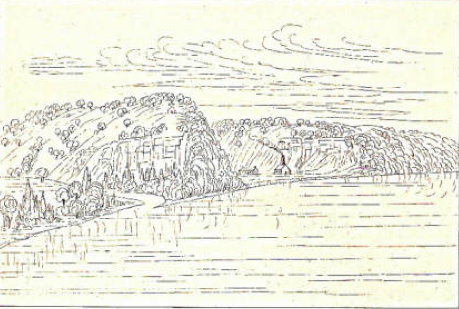Encyclopedia Dubuque
"Encyclopedia Dubuque is the online authority for all things Dubuque, written by the people who know the city best.”
Marshall Cohen—researcher and producer, CNN
Affiliated with the Local History Network of the State Historical Society of Iowa, and the Iowa Museum Association.
CATLIN, George: Difference between revisions
No edit summary |
No edit summary |
||
| Line 1: | Line 1: | ||
[[Image:GeorgeCatlin.gif|left|thumb|200px|George Catlin]]CATLIN, George. (Wilkes-Barre, PA, July 26,1796--Jersey City, NJ, Dec. 23, 1872). Painter, ethnologist, writer. Catlin visited the Upper [[MISSISSIPPI RIVER]] in 1835. He spent many years studying Native American customs and is credited with four hundred seventy full-length portraits of Native Americans in the National Museum | [[Image:GeorgeCatlin.gif|left|thumb|200px|George Catlin]]CATLIN, George. (Wilkes-Barre, PA, July 26,1796--Jersey City, NJ, Dec. 23, 1872). Painter, ethnologist, writer. Catlin visited the Upper [[MISSISSIPPI RIVER]] in 1835. He spent many years studying Native American customs and is credited with four hundred seventy full-length portraits of Native Americans in the National Museum in Washington, D.C. | ||
Catlin made a sketch quickly and finished the painting later. Popular thought at the time was that a rough, quickly drawn sketch better captured first impressions. The most finished part of his work was the head and face. His color palette was limited with many earth tones. To brighten his pictures, he used white or yellow to bring out highlights. (1) | |||
Catlin's famous ''Letters and Notes on the Manners, Customs, and Condition of the North American Indians'', published in 1841, led to his recommending a trip by steamer from St. Louis to the Falls of St. Anthony with stops along the way at Rock Island, Galena, Dubuque, and Prairie du Chien. This "Fashionable Tour" was considered the part of the Far West accessible to the fashionable ladies of the eastern United States. | Catlin's famous ''Letters and Notes on the Manners, Customs, and Condition of the North American Indians'', published in 1841, led to his recommending a trip by steamer from St. Louis to the Falls of St. Anthony with stops along the way at Rock Island, Galena, Dubuque, and Prairie du Chien. This "Fashionable Tour" was considered the part of the Far West accessible to the fashionable ladies of the eastern United States. | ||
[[Image:catlinsketch.png|right|thumb|300px|Catlin sketch of the Dubuque grave.]]Dubuque was remembered by Catlin for its romantic and scenic qualities. Viewing the spectacular bluffs, the huge deposits of [[LEAD]], and the wide expanse of the river led Catlin to write that Dubuque would someday be the "mint" of the nation. | [[Image:catlinsketch.png|right|thumb|300px|Catlin sketch of the Dubuque grave.]]Dubuque was remembered by Catlin for its romantic and scenic qualities. Viewing the spectacular bluffs, the huge deposits of [[LEAD]], and the wide expanse of the river led Catlin to write that Dubuque would someday be the "mint" of the nation. While visiting the pipestone quarry in present-day Minnesota he picked up a sample of the soft rock which was later named Catlinite. (2) | ||
Catlin negotiated with the federal government to purchase his Indian Gallery without success. He displayed his work in London, but was eventually forced to sell his collection to a private collector. The Smithsonian did not acquire Catlin collection until after his death. (3) | |||
--- | |||
Source: | |||
1. "Fort Union Artists-George Catlin." Fort Union Trading Post National Monument. | |||
2. Ibid. | |||
3. Ibid. | |||
[[Category: Artist]] | [[Category: Artist]] | ||
Revision as of 02:41, 30 April 2015
CATLIN, George. (Wilkes-Barre, PA, July 26,1796--Jersey City, NJ, Dec. 23, 1872). Painter, ethnologist, writer. Catlin visited the Upper MISSISSIPPI RIVER in 1835. He spent many years studying Native American customs and is credited with four hundred seventy full-length portraits of Native Americans in the National Museum in Washington, D.C.
Catlin made a sketch quickly and finished the painting later. Popular thought at the time was that a rough, quickly drawn sketch better captured first impressions. The most finished part of his work was the head and face. His color palette was limited with many earth tones. To brighten his pictures, he used white or yellow to bring out highlights. (1)
Catlin's famous Letters and Notes on the Manners, Customs, and Condition of the North American Indians, published in 1841, led to his recommending a trip by steamer from St. Louis to the Falls of St. Anthony with stops along the way at Rock Island, Galena, Dubuque, and Prairie du Chien. This "Fashionable Tour" was considered the part of the Far West accessible to the fashionable ladies of the eastern United States.
Dubuque was remembered by Catlin for its romantic and scenic qualities. Viewing the spectacular bluffs, the huge deposits of LEAD, and the wide expanse of the river led Catlin to write that Dubuque would someday be the "mint" of the nation. While visiting the pipestone quarry in present-day Minnesota he picked up a sample of the soft rock which was later named Catlinite. (2)
Catlin negotiated with the federal government to purchase his Indian Gallery without success. He displayed his work in London, but was eventually forced to sell his collection to a private collector. The Smithsonian did not acquire Catlin collection until after his death. (3)
---
Source:
1. "Fort Union Artists-George Catlin." Fort Union Trading Post National Monument.
2. Ibid.
3. Ibid.



